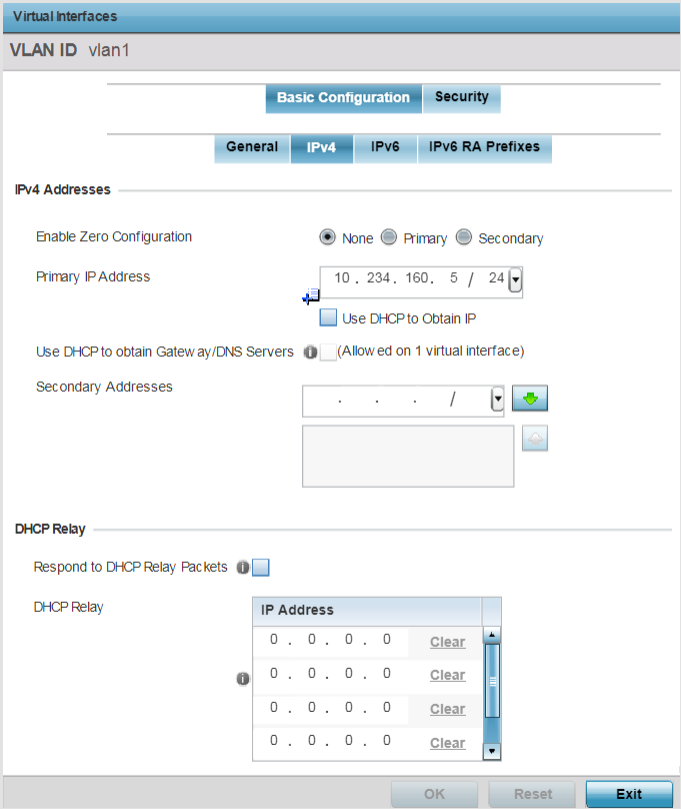Overriding IPv4 Configurations
About this task
IPv4 is a connectionless protocol. It operates on a best effort delivery model that does not guarantee delivery or assures proper sequencing or avoidance of duplicate delivery (unlike TCP).
To override the VLAN IPv4 configuration:
Procedure
-
Select the IPv4 tab.
 Profile Overrides - Virtual Interface - Basic Configuration - IPv4 Screen
Profile Overrides - Virtual Interface - Basic Configuration - IPv4 Screen
-
Set the following network information in
the IPv4 Addresses
field:
Enable Zero Configuration
Zero configuration can be a means of providing a primary or secondary IP addresses for the virtual interface. Zero configuration (or zero config) is a wireless connection utility included with Microsoft Windows XP and later as a service dynamically selecting a network to connect based on a user's preferences and various default settings. Zero config can be used instead of a wireless network utility from the manufacturer of a computer's wireless networking device. This value is set to None by default.
Primary IP Address
Define the IP address for the VLAN associated virtual interface.
Use DHCP to Obtain IP
Select this option to allow DHCP to provide the IP address for the virtual interface. Selecting this option disables the Primary IP Address field.
Use DHCP to Obtain Gateway/DNS Servers
Select this option to allow DHCP to obtain a default gateway address and DNS resource for one virtual interface. This setting is disabled by default and only available when the Use DHCP to Obtain IP option is selected.
Secondary Addresses
Use this parameter to define additional IP addresses to associate with VLAN IDs. The address provided in this field is used if the primary IP address is unreachable.
-
Refer to
the DHCP
Relay field to set the DHCP relay server configuration
used with the virtual interface.
Respond to DHCP Relay Packets
Select this option to allow the onboard DHCP server to respond to relayed DHCP packets on this interface. This setting is disabled by default.
DHCP Relay
Provide IP addresses for DHCP server relay resources. DHCP relays exchange messages between a DHCPv6 server and client. A client and relay agent exist on the same link. When A DHCP request is received from the client, the relay agent creates a relay forward message and sends it to a specified server address. If no addresses are specified, the relay agent forwards the message to all DHCP server relay multicast addresses. The server creates a relay reply and sends it back to the relay agent. The relay agent then sends back the response to the client.
-
Click OK to save the changes to the
IPv4 configuration.
Click Reset to revert to the last saved configuration.


